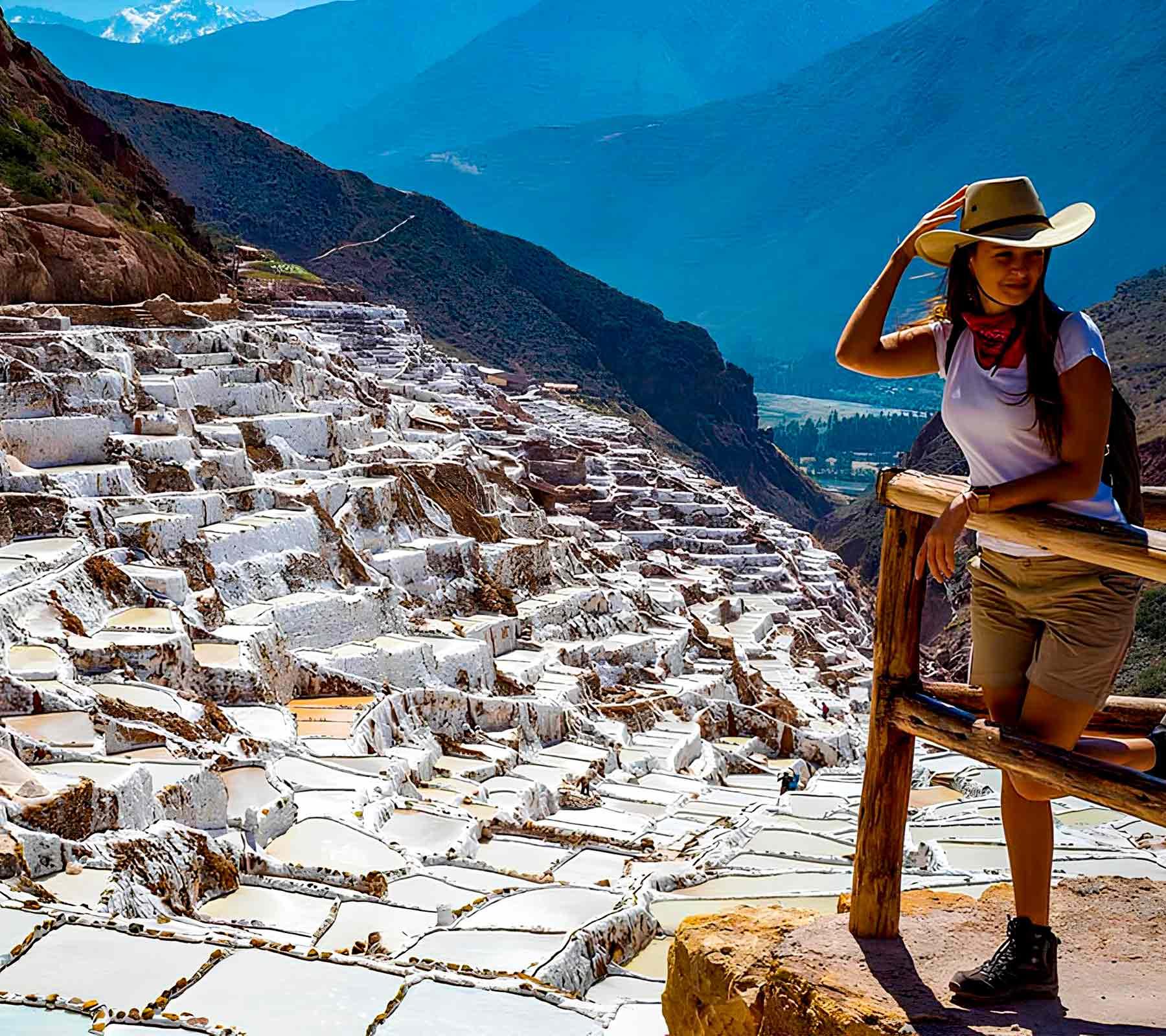Located in the heart of the Sacred Valley of the Incas, close to Cusco, Peru, this site is truly breathtaking and one-of-a-kind. It features thousands of small terraced pools that cascade down the slopes of a hill, marking a place where salt has been extracted since pre-Inca times.
The Maras Salt Mines are far more than just a stunning natural and cultural wonder; they stand as a vivid testament to ancient traditions and the enduring symbiotic relationship between nature and human endeavor.
A short review of the history
The Maras salt mines, nestled in the Kachiraqay area, are comprised of around 3,000 wells, each roughly 5 square meters in size and 30 centimeters deep. These wells are ingeniously designed to evaporate water, harnessing salt naturally sourced from a hypersaline spring within the Qoripujio mountain. This spring, believed to have formed approximately 100 million years ago in the Andes Mountains, feeds the wells with rich, mineral-laden water.
Ownership of each well is passed down among families or local residents, who manage the salt extraction by periodically filling the wells with saltwater every three to four days. The process culminates over a month, during which the water evaporates, leaving behind crystalline salt ready for harvest and subsequent preparation for consumption.
With an annual production capacity of about two tons, the Maras salt mines stand as a pivotal economic pillar for the region. They not only produce high-quality natural salt, sought after in premium markets and for use in therapeutic treatments at upscale hotels throughout the Sacred Valley, but also draw significant tourist interest. Visitors are captivated by the striking landscape of natural salt pools, making the mines a crucial nexus of cultural heritage, economic sustenance, and natural beauty.
A beautiful legend
The legend of Ayar Cachi tells the story of a group of brothers—Manco Capac, Ayar Cachi, Ayar Auca, and Ayar Uchu—central figures in the founding myth of the Inca Empire. According to tradition, as these brothers ascended the snowy slopes of Waqay Wilque, it was revealed that only Manco Capac was destined to establish the empire.
Confronted with this truth, Ayar Cachi, feeling a profound sense of disappointment, was transformed into a mountain. This transformation was marked by an extraordinary event: his tears, symbolizing his sorrow, turned the mountain's base into salt. This aspect of the legend not only underscores the deep connections the Incas had with their natural surroundings but also illustrates the themes of destiny and sacrifice inherent in their cultural narratives.
Passed down through the ages, this story encapsulates the Inca's reverence for their ancestors and the natural world, highlighting the belief in the powerful and sometimes mystical bonds between them. Ayar Cachi's story, while rooted in myth, serves as a reflection on the values and beliefs that shaped the Inca civilization and its relationship with the environment.
How to get there?
Maras is located in the Sacred Valley of the Incas, near the city of Cusco in the Cusco Region of Peru. This historic town, known for its ancient salt pans, is a popular destination for tourists exploring the rich cultural and natural heritage of the area.
To get to Maras, visitors typically start from Cusco, the nearest major city and a common base for travelers in the region. From Cusco, there are several options for reaching Maras:
Tour Groups: Many tour operators in Cusco offer day trips to Maras and the nearby Moray archaeological site. This is a convenient option as it includes transportation, guides, and sometimes meals.
Public Transportation: While there's no direct public bus to Maras, you can take a minibus (colectivo) from Cusco to Urubamba and then transfer to another colectivo that goes to Maras. This option requires some negotiation and a basic understanding of Spanish.
Taxi or Private Car: Hiring a taxi or a private car for the day allows for flexibility in scheduling and the opportunity to visit multiple sites, including Maras, Moray, and others in the Sacred Valley. This option is more expensive but offers convenience and personalization.
Biking: For the more adventurous, biking tours are available that include Maras and Moray. This option provides an immersive experience of the Sacred Valley's landscapes but requires a good level of fitness.
Once in Maras, the salt mines are accessible by a short walk or drive from the town center. Visitors should be prepared for the high altitude and bring water, sunscreen, and appropriate clothing for variable weather conditions.
Some benefits
The salt harvested from Maras stands out for its natural and unrefined quality, preserving an array of beneficial minerals and trace elements, including calcium, magnesium, and potassium. These essential nutrients play a crucial role in supporting electrolyte balance, fortifying bones and muscles, and managing blood pressure levels. Furthermore, the unique composition of Maras salt often results in a reduced sodium content when compared to traditional refined table salt, offering a healthier alternative for individuals aiming to minimize their sodium consumption. Nonetheless, it's important to practice moderation and incorporate Maras salt as a component of a well-rounded diet to fully benefit from its nutritional qualities.
We hope you liked this travel blog, if you have any questions or suggestions feel free to comment! Great day to you!
Another interesting blogs:
- Cusco’s Enchanting Main Square
- Discovering the Heart of the Amazon: Manu National Park
- Journey to the Sun Gate
- Qoyllur Rit’i: An amazing Andean festival






